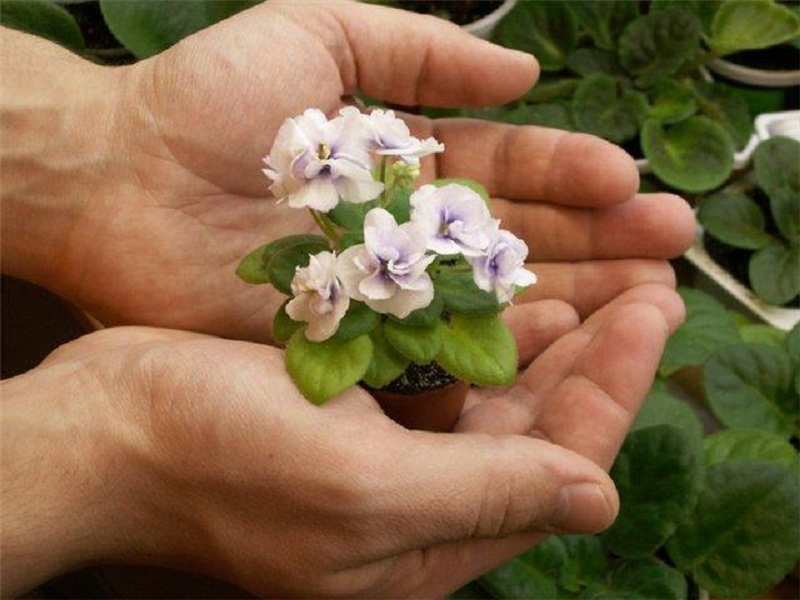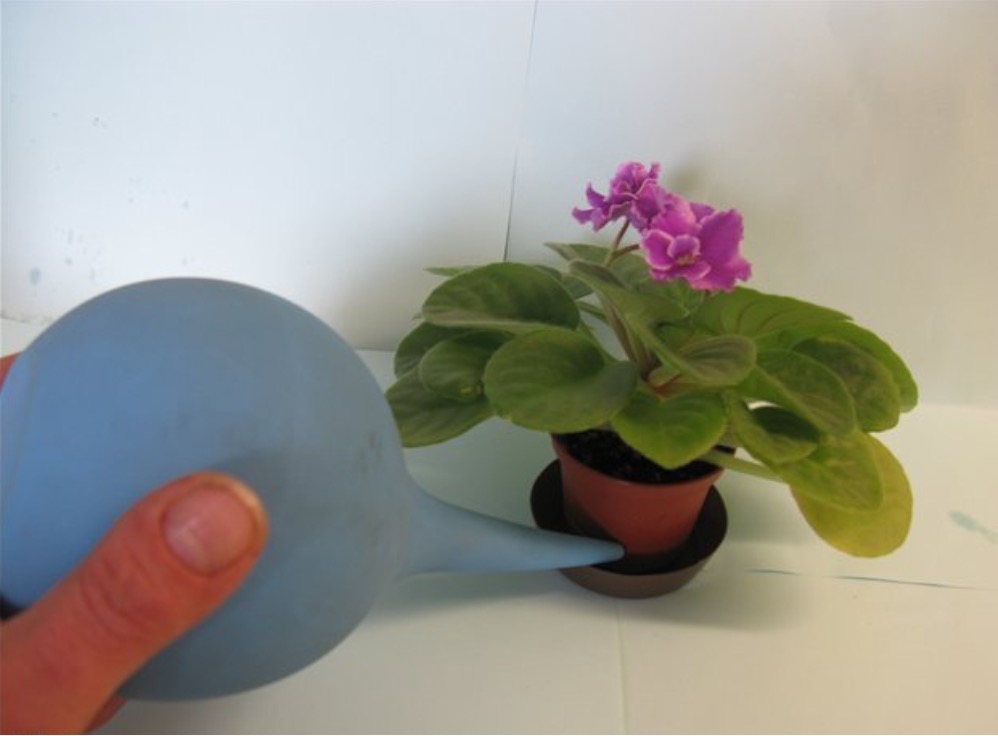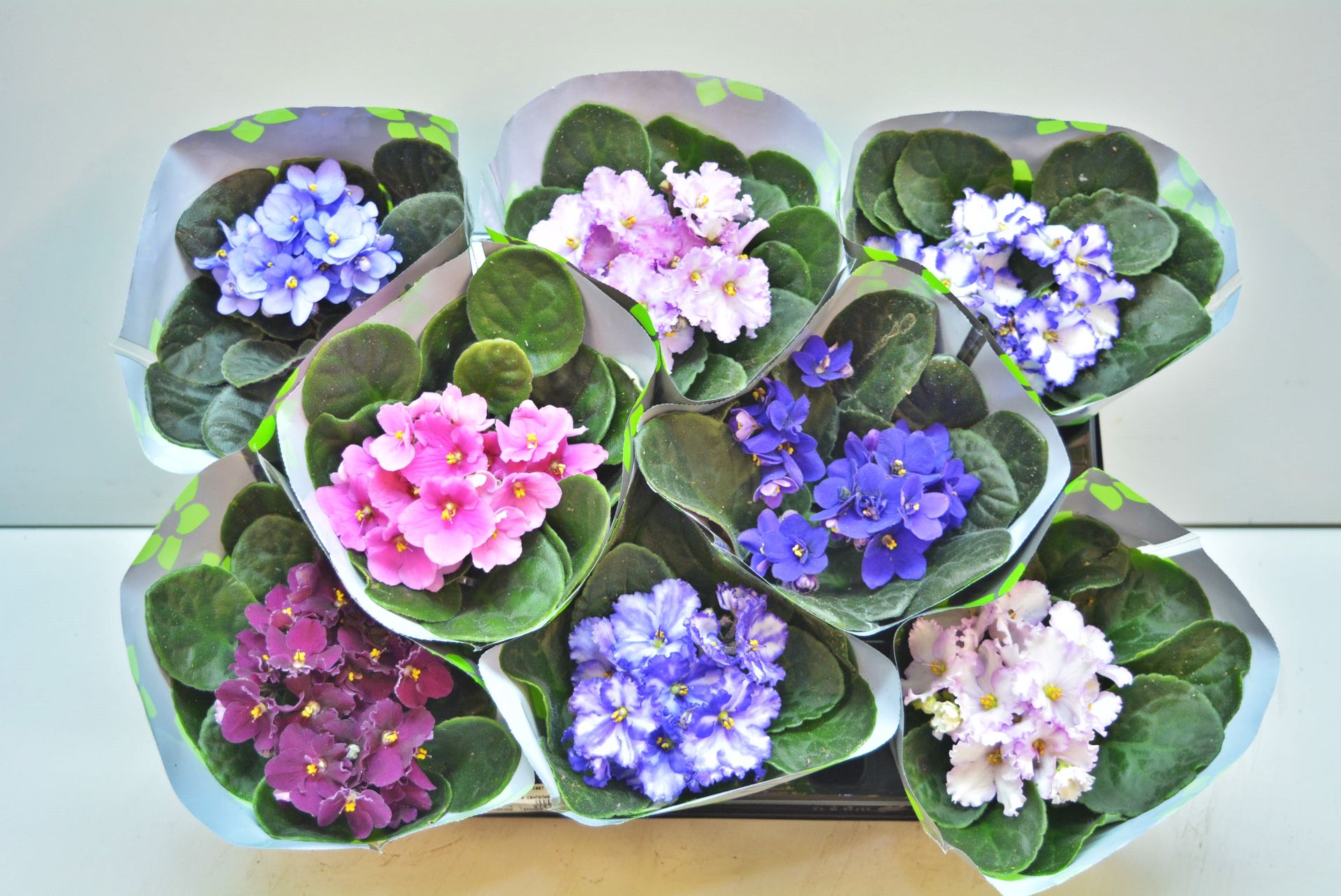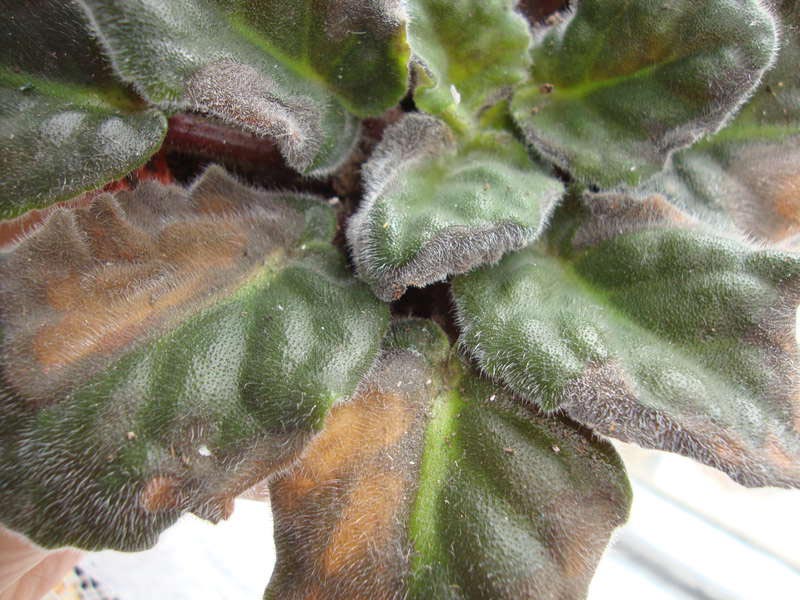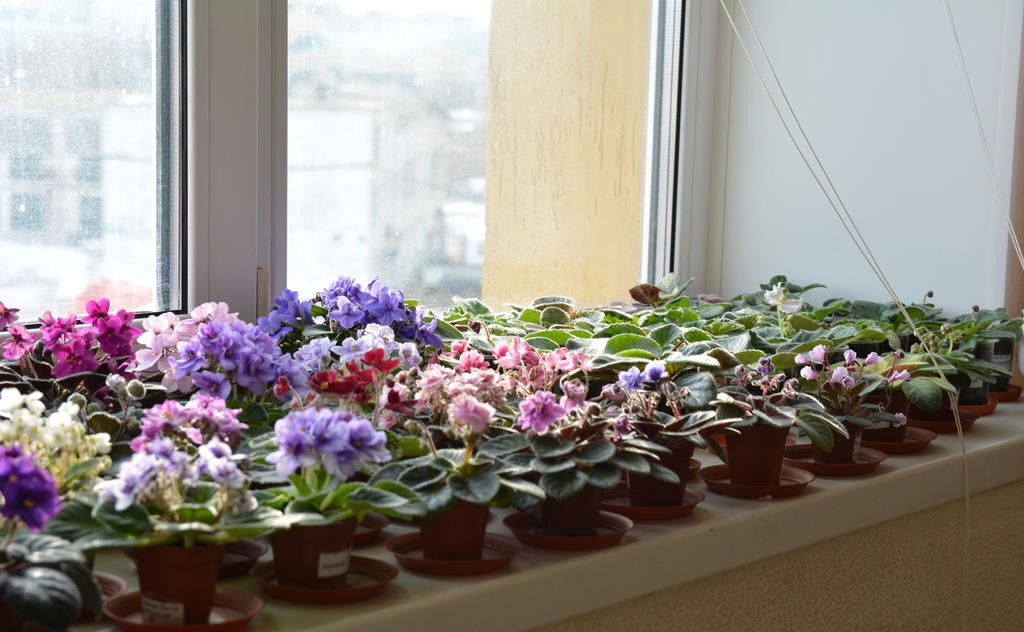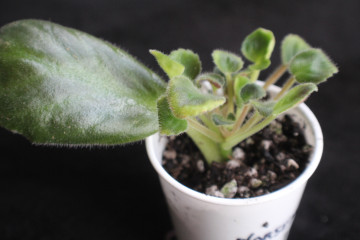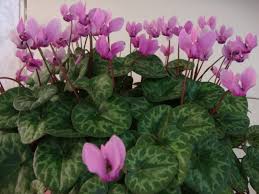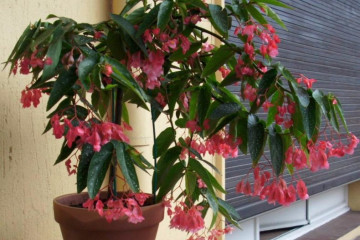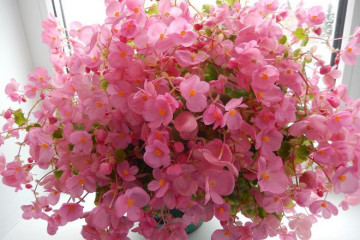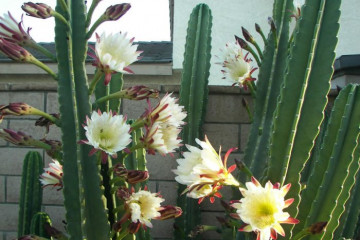Popular mini violets at home
Content:
The violet is a delicate, beautiful common houseplant. This species has many varieties. The flower is loved by many, as it is unpretentious and undemanding to care for. Interesting are the tiny varieties of this beautiful culture - they take up little space, bloom with a lush cap, from under which tiny leaves are barely visible.
About the history of appearance
The Latin name is Saintpaulia, the flower received it in honor of the president of the dendrological society of Germany, Adalbert Saint-Paul, who brought violet seeds from Africa. Saintpaulia mini, like the standard, spread throughout the world from Africa.
What mini violets look like
There are 3 varieties of mini: semi-mini violets, miniature and microminiature species.
The diameter of a half-mini rosette ranges from 15 to 20 cm. If they are transplanted into a larger pot, they will quickly move into the category of standard violets.
The rosette of mini varieties does not exceed 15 cm in diameter. In order for these varieties not to grow, the lower tier of leaves is constantly removed, and the flower is transplanted.
The diameter of the rosette in microfialoks is no more than 8 cm, the length of the leaves is only 0.6-1.2 cm. These babies are the most demanding in care. The leaf blades are shaped like a heart or a circle with wavy edges. The central vein at the base of the leaf is thicker and lighter than the other veins. Babies have more leaves than standard violets. Their flowers are no more than 4 cm in diameter.
Description of common varieties
Common varieties of semi-miniature violets are:
- Aca's Happy Star - the flower of this variety resembles a large double pink star, from the center of which dark burgundy rays radiate.
- Aca’s Johnny Redcoats - the variety has a dark lilac color of flowers, the tips of the petals are white, the flower petals are velvet.
- Adirondack Moon is a variegated variety. Inflorescences are double or semi-double white. In the center, the petals are yellow and lilac-blue.
Popular among minivials:
Alan's Blue Star is a variety with large blue flowers. An interesting variety is that on the petals its small dots of coral color. In shape, the flower resembles a star with wavy edges and a thin white stripe along the edge. The leaves of this variety are small, dark green with denticles along the edge.
- Bahamian Sunset is a variety with a neat rosette of burgundy double flowers and a thin white stripe around the edge.
- Gleeful Elf is a variety with a compact rosette of delicate blue flowers, along the edge of which there is a white-green border. Leaves are light green in color.
Microsorts are represented by such varieties as:
- Chantaspring is a violet with a rosette of small yellow bells.
- Rob's Twinkle Blue - blue violet. The rosette of the flower is only 5-6 cm in diameter.
- Child's play is a variety with heart-shaped leaves and white flowers with a lilac shadow on the petals.
Caring for mini violets at home
Minisorts are easier to care for than standard varieties. They are less likely to get sick, it is convenient to reproduce them by cuttings. However, certain subtleties of care need to be known in order not to destroy the plant.
Temperature
Miniature violets are more demanding on temperature conditions. The optimum temperature for them is 21-24 ° C. Delicate leaves should be protected from direct sunlight. Babies feel good in partial shade. Diffused lighting is ideal for them: through a thin curtain fabric or a mosquito net.
Lighting
Daylight hours for crumbs should be at least 12 hours. If there is a shortage of natural light, they are placed on racks under the lamps.
Watering
Due to the small size of the pot, miniature Saintpaulias have to be watered more often, focusing on the drying of the top layer of the earth. In summer, plants need more frequent watering. The portion of water should be small. The best measure for watering is a medical syringe.
Saintpaulias mini is watered with settled or filtered water at room temperature. It is necessary to pour water into the pot until it begins to flow through the drainage holes onto the pan. After half an hour, the water must be drained from the pallet.
When watering, a stream of water is directed to the edge of the pot so that it does not fall on the bottom row of leaves.
In addition, to maintain moisture, Thumbelina can be watered through a sump, using charcoal and sphagnum as drainage. The use of wick irrigation is possible.
Spraying
Plants are sprayed against pests and for the prevention of diseases with the pesticide "Confidor". The procedure is performed outdoors on a cloudy day, when its temperature is above + 15 ° C. Only when the leaves are completely dry, the pot is brought into the room.
Closer to autumn, you can spray violets with "Aktellik" or "Fitoverm" for prevention. This spraying is done twice at weekly intervals.
In order for the babies to develop faster and bloom better, they are sprayed with "Epin" once a month. For the procedure, 1 ml of the product is diluted in a small amount of water, mixed thoroughly, then poured into 5 liters of water. All leaves should be evenly moistened with the solution.
If Thumbelina had stress in the form of drought or hypothermia, it is recommended to treat them with a 2% solution of succinic acid. To prepare a solution, 1 g of acid is diluted in 2 tablespoons of warm water, then poured into 2 liters of water. The prepared succinic acid solution can be used within 3 days.
Humidity
For good health, babies need air humidity of 50-70%. Central heating systems in apartments are very dry air. Therefore, to create suitable conditions, micro varieties are placed in aquariums or placed on a pallet with wet expanded clay, damp sand. You can also humidify the air by placing an open container of water on the windowsill next to the violets.
Priming
Since small pots are taken for violets, the soil in them quickly deteriorates: the earth cakes, its acidity changes, the nutrients in it run out. To avoid problems with the development of babies, they are transplanted 2 times a year, changing not only the soil mixture, but also the pot itself.
Microsorts do not need leavening agents in the soil. A good soil for them is one in which there is a sufficient amount of peat, and there is sand. Expanded clay or sphagnum is used as drainage.
Top dressing
Provided that plants are transplanted 2 times a year, micro violets do not need fertilization. If, according to the state of the plant, it is clear that it needs mineral or organic fertilizing, then for the minispecies they take the same fertilizers as for standard violets, but the concentration of the solution must be made 2 times lower.
The optimal feeding will be complex factory fertilizers with potassium, nitrogen and phosphorus.
When and how it blooms
The flowering period for small violets begins earlier than for standard species: 5-6 months after planting, the young stalk will bloom. Despite their small size, their peduncles are strong, form large caps of flowers and do not fall on the leaves.
The onset of the flowering period can be accelerated by increasing the daylight hours and the intensity of lighting for the babies, feeding with fertilizer with phosphorus, and cutting off the stepsons.
The appearance, shape and color of flowers
Since there are many small varieties of Saintpaulia, the appearance of their flowers is very different. The petals can be smooth or double, the shape of the flower can resemble a bell or a star. There are usually several flowers on one pedicel.
The color range of the petals is also wide enough. It is interesting that the petals are monochromatic, sometimes they have one shade or another. The most common colors in mini saintpaulias are white, white with a lilac shade, pink, pure blue or blue with a purple tint, red-burgundy, blue.
After the flowering period is over, seed pods form on the peduncle.
When they bloom (using the example of popular varieties)
If optimal conditions are created for mini, then their flowering period will last from 9 to 12 months. It is noteworthy that the flowering period is not related to the season - the babies bloom in both summer and winter. However, most varieties start flowering in early spring.
Changes in care during flowering
During the flowering period, the babies are looked after in the same way as during the rest period: they are watered, the necessary air humidity is maintained. You just need to remember that pests and diseases are not treated during the flowering period.
In addition, a characteristic feature of small species is that during the flowering period they have many stepsons that need to be cut off in order to prolong flowering and prevent the transition to the standard.
Transplanting mini violets after purchase
It is best to purchase a flower in the fall or spring. Immediately after the purchase, the flower must be transplanted into a pot of the same size.
At the first transplant after purchase, the root system of the flower is left in its original state. As the plant develops, its root will grow, therefore, with subsequent transplants, the following manipulations need to be done:
- Shake off old soil from the roots.
- Cut off part of the root system.
- Cut off several rows of lower leaves, taking care not to disturb the shape of the rosette.
- Put drainage in a prepared new pot, pour a layer of earth. The violet must be placed in a pot so that its leaves touch the edge of the pot. If necessary, the roots are further shortened.
- Add the required amount of soil by tamping it.
- Cover the plant with a plastic bag and keep under it for 2 weeks.
Possible problems in growing mini violets
Florists can face some difficulties and problems. The appearance of the plant signals the presence of problems: deformation of the leaves, a change in their color, the falling of leaves and buds. The fact that the plant was chosen by parasites is evidenced by the appearance of flying insects.
Diseases
The main diseases of small varieties are:
- Decay of roots. This problem occurs with excessive watering and a relatively low air temperature in the room. If it is found, the affected roots must be cut off by processing the cuts with crushed charcoal. Change the soil, optimize the growing conditions.
- Burns on the leaves (yellow spots on the leaves). This problem appears as a result of direct sunlight on the plant. Damaged leaves must be cut off. For violets, choose a new place, protected from the scorching sun.
Pests
Common pests of tiny varieties are thrips, slugs, aphids.Signs of pests include honey-like plaque on the leaves, sticky discharge on the leaves and stem. To combat parasites, the leaves of the plant must be washed with soapy water and sprayed with infusion of garlic or diluted tincture of calendula.
Other problems
Due to the fact that in plants the lower rows of leaves are close to the ground, there is a high probability of their decay. In addition, due to care errors, they may not bloom. So, Saintpaulia will not bloom if you do not artificially stop the dormant period, stimulating active flowering.
Thus, mini violets are popular among flower growers. Many are attracted by the variety of varieties, the opportunity to acquire a mini-flower garden on the windowsill. In addition, despite some features of care, in general, the plants are unpretentious, have good immunity and develop quickly.
Video

